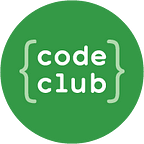Light, Moonhack 2022
In 2022 Moonhack is set to take place during World Space Week to focus on the role of satellites in our world, both natural and man made. Our Light project showcases how we can use readily available information to make choices about our usage of electric lights in a sustainable way.
Haven’t registered for Moonhack yet? Make sure you register here.
When making discoveries about space there is no better person to turn to than Dr Brad Tucker from the Australian National University. Dr Brad is well known for his passion about all things space and you only have to watch his Space News videos to see this. We were so excited to have Dr Brad collaborate on this project with us, even when he was in the middle of attending the launch of 3 NASA rockets in the Northern Territory and verifying space junk that landed in a farmers paddock in New South Wales.
When discussing this year’s theme, Dr Brad made immediate links to daylight and the UNs sustainable goals 9 and 11 which look at developing sustainable cities and industry. Energy consumption, and our focus on conserving this resource, led to a project being born.
About the Project
As the world focuses more on energy efficiency and innovation, there are many ways that we can currently use data sets to inform our decisions both at home and in the work place. This project looks at the scientific definitions of each stage of sunrise, sunset, moonrise and moonset and uses this information to pull real time data that can help a user to make decisions about the optimal time to turn lights on and off.
The Python program draws on data libraries that are used frequently by scientists, researchers and academics. The ephem library performs high-precision astronomical calculations using the position of planets, asteroids and comets for a series of dates. The Pytz module is used to determine the time of any region using the local time zone name.
Australian Curriculum Links
Looking at the Digital Technologies curriculum this project clearly sits within the year 7–8 band with its use of general programming language and with a focus on using data sets from a range of sources. By increasing the focus on presenting a solution that uses the data, this project could become a great STEM project.
This project also has strong links to the Science curriculum in year 5 and 7. Year 5 students can use this project to develop a deeper understanding of the different twilights that we experience (civil, nautical and astronomical) and year 7 students can extend on this learning when looking at the relative positions of the Earth, sun, moon and other planets.
Further Resources
To broaden understanding of the content within this project there are many great resources which can be accessed.
To understand the program you need to have an understanding of the different types of twilight which are explained here.
To take this project further you can look at light pollution and the impact that this has on people, animals and the environment. BTN created a great video about this.
Energex has some great information around tips for reducing energy costs associated with lighting. This could be explored in more depth to develop a design solution using the data output.
And of course, to build enthusiasm and excitement for anything space check out Dr Brad’s latest Space News.
Moonhack takes place from October 10th to 23rd in 2022. Make sure you register to be counted in this year’s numbers!
Kaye
Moonhack Mission Control
